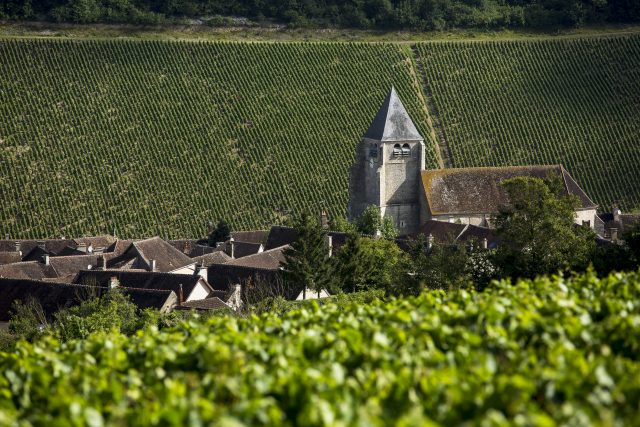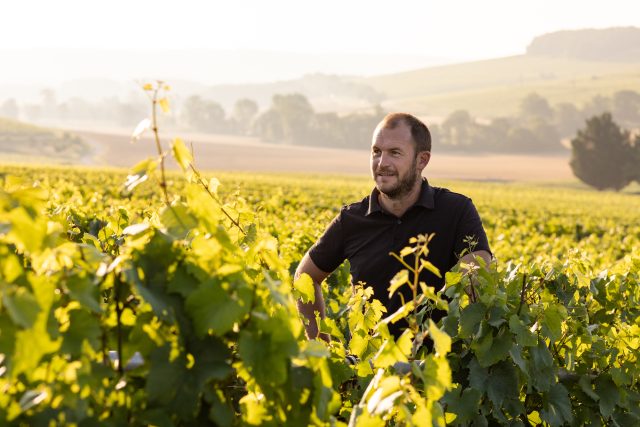A glimpse into the future of Chablis
By db staff writerA new generation of winemakers is chaperoning this Chardonnay-driven French region into a bright new era.

Winemaking may be an age-old art form, but that doesn’t mean winemakers have to be wed to the past. In France’s Chablis region, almost 25% of winery leaders are now under 40 years old, and this new generation of producers is bringing exciting new ideas to the table in their quest to create terroir-driven wines with elegance and finesse.
Chablis’ new generation of winemakers is also the driving force behind more environmentally friendly practices being applied more broadly throughout the region’s vineyards and cellars.
Research has shown that agricultural leaders who are aged 55 years or older in the Bourgogne Franche-Comte region are less likely to embrace organic production than those under 40. The growing presence of younger producers in the Yonne department, which encompasses the appellations of Chablis, has resulted in an increasing number of winemakers wishing to produce organic wines. The surface area of vines in the process of being converted to organic tripled in two years, going from 242 hectares in 2019 to 700ha in 2021.
This new dynamic is a sure sign that change is under way.
Eve Grossot, fourth-generation winemaker at the family-run Domaine Corinne & Jean-Pierre Grossot, has been growing organically for several years to “better respect our soils.
“This means that we have to work more meticulously and be ready to intervene at any time, depending on the weather,” she tells the drinks business. “We have chosen to vinify our wines with indigenous yeasts and bacteria and to limit our input as much as possible. Yes, it requires greater care, but it also allows us to make slower, gentler vinifications where we give the wine all the time it needs.”
The Grossots cultivate 18ha of vineyards in the village of Fleys, just east of the town of Chablis. Their vineyards are on the right bank of the Serein River.
“I want people to feel the energy of our wines, their vivacity and purity, as well as the typicity of our terroirs when they drink them,” Grossot says.
Of course, converting to organic production does not automatically solve all problems.
“The challenges of tomorrow will be adapting to climate change and the various climatic hazards we are experiencing, while trying not to change the style of our wines,” Grossot explains. “We need to respect our fauna and flora as much as possible and cultivate our vines in a way which reduces the impact on the nature that surrounds us.”
The young winemakers of Chablis often bring a wealth of international experience to their domaines to add to the in-depth knowledge of their forbears. They are experimenting with different techniques and equipment to better interpret and express the Chablis terroirs. One such winemaker is Marjorie Molusson, whose wines at Domaine des Trois V are both HVE3- and vegan-certified.
“My three Premier Crus are vinified in different containers to give them a real typicity,” she says. “Vaucoupin is in stainless steel tanks, Vosgros in oak barrels and Vaugiraut in amphora.”
This openness to trying new methods is a hallmark of Chablis’ younger winemakers, and increasingly, of the Chablis AOC itself. Domaine des Trois V, based in Chichée, is the custodian of a collection of very old vines, some of which are more than 35 years old. Molusson’s fresh and sustainable approach is designed to preserve these precious treasures for many more years to come, to safeguard the hard work of previous generations of her family.
“Year after year, I strive to bring a wind of change to the domaine’s viticultural and winegrowing practices,” Molusson has said. “At first, it was difficult to impose my ideas. My family was very sceptical. Things like abandoning glyphosate, tilling the soil with a plough and weeding inter row represented for them setbacks. But I held on and today I feel supported in my choices.”
The Domaine des Trois V now extends across almost 20ha, and produces around 1,000hl of Chablis wines per year. Molusson is by no means the only female winemaker leading change. In fact, 30% of winery leaders or co-leaders in Chablis are now women, representing a significant step in the right direction towards gender equality in wine.
Strong commercial nous is another calling card of Chablis’ young talent.
“Making wine is good but selling it is better,” says Marion Mothe of Domaine du Colombier in Fontenay-Près-Chablis, which owns 55ha of Chablis, Chablis Premier Cru, and Chablis Grand Cru vines.
“I manage the estate while also going out on the road to market our wines. I am proud to meet people and pass on our knowhow.”
Mothe’s outlook might be one of pragmatism but she also cares deeply about preserving the exceptional quality of Chablis wines. “I like to make wines that are fresh, lively, and have a bit of a kick to them, to bring out the typical Chablisian gunflint,” she says. “I look for the typicality of our limestone soils with a nice mineral persistence, and citrus notes. Chablis has a good reputation worldwide which motivates me to make quality wines to keep this reputation for a long time.”

Winemaker Guillaume Michaut struck out on his own after almost 15 years of working for the family business with his own small share of the family’s vines.
“My winemaking has changed considerably in the sense that I have stopped working with my family and started working alone, in perfect alignment with my beliefs,” says Michaut, who founded Domaine 47n3e in 2018, a property that has been under organic conversion since 2020. The winery’s name refers to the latitude and longitude of the town of Beine (47n 3e).
Michaut started his vineyard with only 1ha – comprised of 0.4ha in Chablis and 0.6ha in Premier Cru Beauroy and Côte de Savant –but with the desire from the start to use a biodynamic approach.
“The most important characteristic to have as a winemaker is versatility, as we practice several jobs, including geologist, mechanic and chemist on a daily basis,” says Michaut. “It’s a job where you always have to question yourself, analyse and adapt. Nothing can simply be taken for granted.”
Like Michaut, Marjorie Molusson of Domaine des Trois V feels passionately that flexibility is key, especially in the face of a rapidly changing climate. “Our job is exciting because it is not a long quiet road, you have to constantly adapt,” she says. “The vine is a part of us. When it goes wrong, we go wrong.”
Molusson is always, she says, mindful of the bigger picture, whether that be the health of the planet or her place in the wider Chablis region. “We have an important role to play in the sustainability of our vineyard and the reputation of the appellation throughout the world,” she says. “It’s a chance to shape the landscape every day, to be rewarded for a whole year of work through our finished product. I want to be part of those who make Chablis shine.”
“Chablis is a magnificent terroir when it is treated well,” Michaut adds. “By working without chemicals in the vineyards, respecting the living world and by using a gentle vinification, I am convinced that it is possible to produce an even deeper and more vibrant Chablis. We can show people unique wines that taste like no other.”
Join one of our Chablis masterclasses
If you are interested in discovering more about how winemakers such as Michaut plan to do so, then don’t miss the opportunity to attend one of two forthcoming Chablis masterclasses hosted by the drinks business. The first masterclass will be held on 22 May in Oxford, and the second will take place on 12 June in Glasgow.
Guests will be guided through a selection of terroir-driven wines from the new faces of Chablis, and from all four appellations.
To sign up to a masterclass, visit: thedrinksbusiness.com/Chablis-masterclass.
And for more information on Chablis wines visit chablis-wines.com
Read on for tasting notes of the wines featured in the Chablis masterclass, provided by Michelle Cherutti-Kowal MW.

Petit Chablis, 2020, Domaine Passy Le Clou
This 100% Chardonnay has aromas and flavours of green apples, lemons and a hint of pear. A rounded mouthfeel and fruit concentration balances out the high acidity.

Chablis, 2020, Domaine Jean Collet et fils
Expect grapefruit and lemons with a hint of dried grass in this single-varietal Chardonnay wine. Searing acidity on the palate with a steely texture gives the wine good typicity.

Chablis Premier Cru, Montmains, 2019, Domaine Pinson Frères
Green fruit with a hint of pear and almond skins on the nose, this beautifully creamy wine has a hint of honey on the palate surrounded by tart acidity and finishing with a chalky texture. An excellent wine that will age well.

Chablis Grand Cru, Blanchot, 2019, Louis Jadot
Aromas of red apples and pears with lemon curd and honey on the palate. This wine has a rich texture in the mouth with a savoury edge, firm acidity and a long lingering finish.

Chablis Premier Cru Vaucoupin 2019, Domaine Gautheron
This 100% Chardonnay has notes of peach and pear with a nutty edge. The volume of fruit in the mouth is surrounded by vibrant acidity, steely, with a honeyed note on the finish.
Related news
WWE legend goes viral after Napa wine tasting
Favourite kosher wine 'impossible to find' due to trade war
Piccolo power: why Henkell's small bottle has stood the test of time
